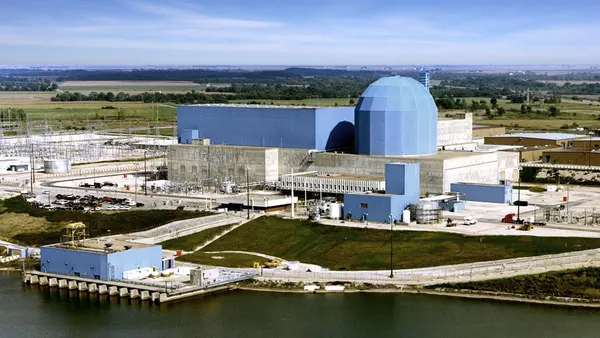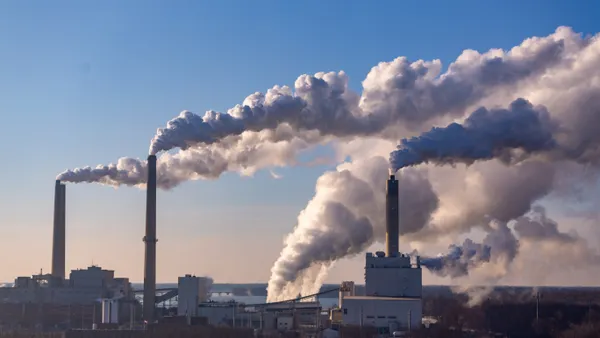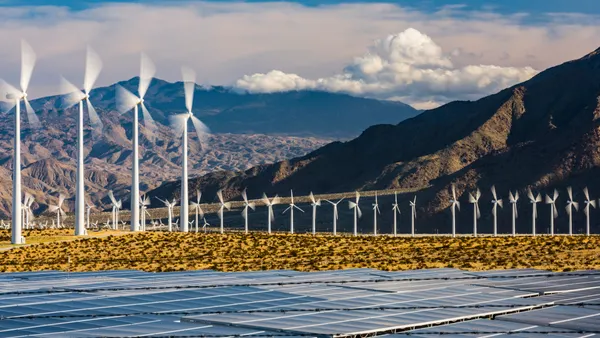According to BloombergNEF reporting released last month, by the end of 2030, the energy storage industry will have installed a total 358 gigawatts (GW) /1,028 gigawatt-hours (GWh), breaking the 1 terawatt (TW) threshold. This boom will attract more than $262 billion to the market, according to experts. There's much to celebrate in energy storage as we ring in the New Year, and we're pleased to see that 2022 is expected to bring continued growth at an even faster pace. I have a few thoughts on the trends we'll see unfold as a result.
All data suggest that continued advancements in materials and manufacturing are driving battery storage costs down for the next several years, making it increasingly cost-competitive with incumbent storage technologies. That will especially be the case in the U.S. with the approval of key federal funds for national energy infrastructure from President Biden's Infrastructure Investment and Jobs Act. We're particularly encouraged to see investments into transmission infrastructure prioritized, which will provide much needed capacity on the grid for more renewable generation, necessitating additional energy storage capacity.
That said, there's plenty of room for regulatory improvements. Market growth will look especially promising in 2022 in the U.S. if Congress passes the Build Back Better Framework, which includes an investment tax credit for standalone energy storage. At the state level, we expect to see more storage systems required for frequency regulation as more renewables are deployed, and we hope to see changes to the regulatory framework that reflects the duration limitation in the context of a portfolio so that asset owners can earn capacity credits or resource adequacy payments for grid services.
As demand for renewables continues, we'll also see long duration storage become more critical. We're preparing for the average duration of systems to increase over 2 hours this year on the backs of these 4-hour systems. This advancement is already taking place in American markets, and we expect to see global markets match this trend in 2022. Over the last year we've deployed more than 16 projects using multi-hour systems in Australia, the Philippines, Taiwan, the U.S. and the UK. In the U.S., we will increasingly see 4-hour systems paired with renewables and we're planning to develop multiple 2-hour systems in Australia. In the meantime, we're seeing that gas plants remain the best solution for on-demand backup and peaking power for longer durations. We're working hard to make gas plants more sustainable by incorporating green hydrogen and "future fuels" instead of natural gas, while long-duration battery storage technologies catch up.
Alongside explosive growth, we expect to see some growing pains. Across the globe, and across industries, labor shortages pose a threat to continued growth. This is especially true in the energy storage industry, where the skillset is in short supply and often requires advanced technical training. Some are working to provide training and workforce development programs to fossil fuel-based energy industry workers, but the industry in general is facing challenges changing mindsets, hiring, training and retaining new talent. We've implemented a three-pronged career development approach at Wärtsilä to overcome these hurdles and support the incoming workforce. This includes a 100-day self-paced onboarding program for new hires, bootcamp sessions that address specific leadership topics, and competency reviews to fill in any gaps in skillsets.
Battery and lithium bottlenecks and supply imbalance will remain a challenge for the near term. Already the demand for low-cost lithium-ion is record high, especially as demand for electric vehicles (EVs) increases. Recent reporting indicates that the global lithium-ion battery market is projected to grow from $41.1 billion in 2021 to $116.6 billion by 2030. There's no easy fix here, and there's always potential for shocks to lithium-ion markets due to the sheer scale of demand.
The continued adoption of EVs will also intensify pressure on energy providers next year, creating challenges for utilities and opportunities for storage. Research indicates that in 2050 EVs could contribute to a 33% increase in energy use during peak electrical demand. In preparation, we're seeing EV charging co-optimized with large onsite energy storage used to alleviate strain on the grid and provide essential capacity for rapid EV charging. My team paired up with Pivot Power in England to develop a national network of grid-scale batteries and high-volume power connections for rapid EV charging along UK motorways. I am particularly excited to bring our large-scale storage and EV charging experience to the U.S. and watch this configuration become more popular in the coming years.
Ultimately, I'm eager to move this industry forward because scaling energy storage is critical for accelerating the transition to decarbonized energy infrastructure. We released a report last month modeling pathways to a 100% renewable grid that found “front-loading” the deployment of renewables can slash global energy costs. We're working with industry leaders who are eager to support the transition strategically, by deploying technologies needed to balance renewable intermittency, such as energy storage. Energy storage is key to preparing for and capturing more value from the increasing penetration of intermittent resources, while efficiently supporting system reliability. Let's usher in the new year ready to collaborate across sectors to accelerate our transition to a clean energy future.










